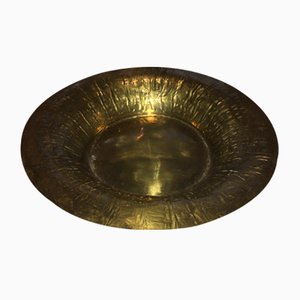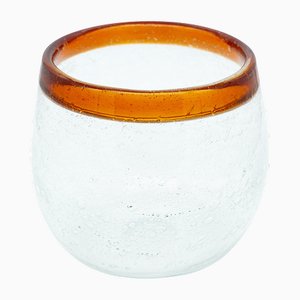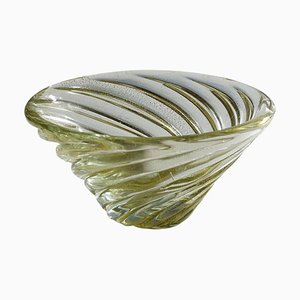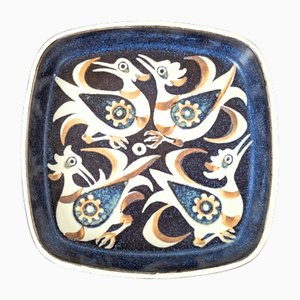A descendant from a long, long line of Tuscan ceramic manufacturers, Guido Bitossi established his own ceramic craft works near Florence, in Montelupo, in 1921. Originally named Manifattura Ceramica Cav. Guido Bitossi & Figli (Ceramaic Manufactory Guido Bitossi & Sons), the company name was later shortened to Bitossi Ceramiche.
After World War II, master ceramist Aldo Londi (1911-2003) became the creative director of Bitossi Ceramiche, a position he held for more than fifty years. Londi—who was also from Montelupo—began apprenticing in ceramics at the age of eleven and brought to Bitossi a deep expertise in traditional ceramics production. He’s best known for his 1950s-era collection Rimini Blu (1955-1965). This iconic midcentury modern series contains over 150 designs, including bowls, vases, jugs and animal figurines, all glazed in a vibrant blue hue and embossed with abstract motifs and shapes. Londi created the first piece glazed in Persiano Blue, Ball Vase, in 1955. Shortly after in 1959, he began to create more pieces in the proprietary chromatic glaze. The collection holds historical importance because it helped to bring handcrafted and expressive works into the modernist design conversation in Italy. Though the blue was not the only color Bitossi favored, it has become closely associated with the brand’s identity. The collection is still in production today and widely collected by ceramics enthusiasts.
Londi and Bitossi had a very successful collaboration with legendary architect-designer Ettore Sottsass (1917-2007). As a part of the 1960s counter-culture, Sottsass thought design should be provocative and sensual. Sottsass’s avant-garde style blended well with Bitossi’s midcentury modern aesthetic and generated a number of highly collectible designs. Other Bitossi collaborators include designers Piero Fornasetti (1913-1988), Karim Rashid, Arik Levy, Fabio Novembre, Benjamin Hubert, Matteo Thun, Monica Förster, and Cédric Ragot.
Now considered to be an institution in Italian ceramics, the Bitossi family and Vittoriano Bitossi Foundation have amassed an archive of over 7,000 historical documents and materials in relation to their ceramic production. The collection is housed in the Bitossi Artistic Industrial Museum, which in 2011 became a member of the Italian Association of Enterprise Archives and Museums. In 2014, Bitossi Ceramiche became an official member of the Registry of Italian Historical Companies, appointed by the National Union of Chambers of Commerce.
* All images courtesy of Bitossi Ceramiche













Get in Touch
Make An Offer
We noticed you are new to Pamono!
Please accept the Terms & Conditions and Privacy Policy
Get in Touch
Make An Offer
Almost There!
To follow your conversation on the platform, please complete the registration. To proceed with your offer on the platform, please complete the registration.Successful
Thanks for your inquiry, someone from our team will be in touch shortly
If you are a Design Professional, please apply here to get the benefits of the Pamono Trade Program